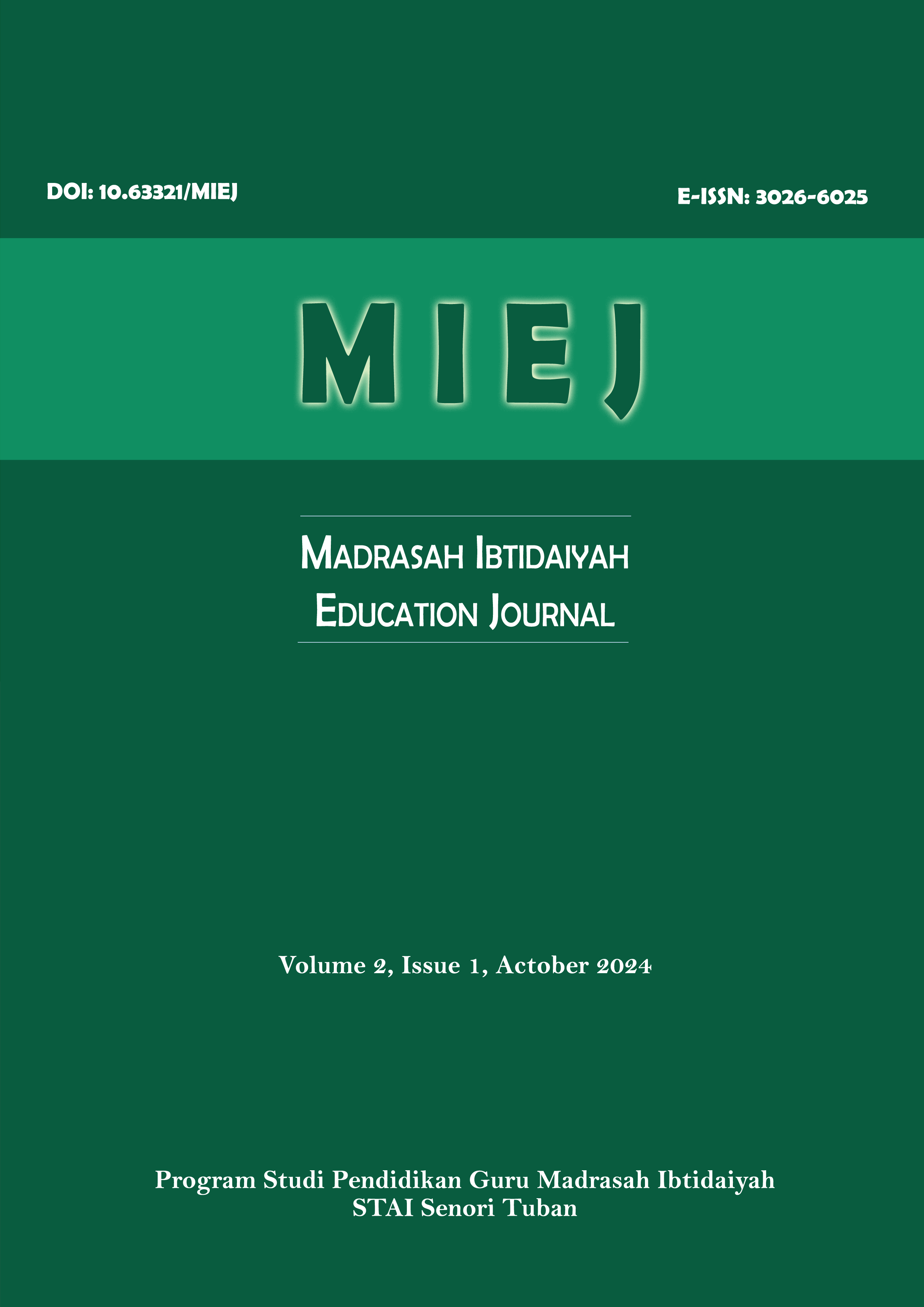Strategi Meningkatkan Potensi Kecerdasan Visual-Spasial Peserta Didik di Tingkat Sekolah Dasar
DOI:
https://doi.org/10.63321/miej.v2i1.40Keywords:
Learning Strategies, Visual-Spatial Intelligence, Educational Technology, Elementary SchoolAbstract
Visual-spatial intelligence is an individual's ability to understand, recognize, and manipulate objects in space effectively. Developing visual-spatial intelligence is very important at the elementary school level because it can support students' academic and non-academic achievements and creative thinking skills. This research aims to formulate an effective strategy for increasing the visual-spatial intelligence potential of students at the elementary school level through a literature review. This research uses library research methods, where data is obtained from various relevant literature, such as books, scientific journals, articles, and previous research results. These sources are analyzed to find and formulate learning strategies that educators can apply. The research results show that using media such as maps, pictures, logos, puzzles, diagrams, and others, as well as project-based activities such as making models or works of art, can stimulate students' visual-spatial intelligence. In addition, interactive learning environments and digital technology such as visualization applications have also proven effective. This research concludes that combining visual media, practical activities, and digital technology is a strategy that can help develop visual-spatial intelligence at the elementary school level.
Downloads
References
Amstrong, T. (2009). Multiple Intelligences in the Classroom (3rd ed.). VA; ASCD.
Arikunto, S. (2010). Prosedur Penelitian: Suatu Pendekatan Praktik. Rineka Cipta.
Asidah, N., Nurtantiani, N., Zahratunnisa, F., Rosyidah, I., & Risma Putri, D. (2022). Problematika Penerimaan Peserta Didik Baru (PPDB) pada Masa Pandemi Covid-19 di SMP Negeri 1 Sangatta Utara. Metta : Jurnal Ilmu Multidisiplin, 2(3), 110–118. https://doi.org/10.37329/metta.v2i3.1736
Baharun, Z. (2020). Pengelolaan Alat Permainan Edukatif Berbahan Limbah Dalam Meningkatkan Kecerdasan Kognitif Anak. https://doi.org/10.31004/obsesi.v5i2.763.
Buzan, T. (2006). Mind Mapping: Concepts and Tools for Business. BBC Active.
Danim, S. (2014). Perkembangan Peserta Didik. ALFABETA CV.
Dept. Pend. Nas. (2007a). Pengembangan Bakat Non Akademik. Direktorat Pembinaan Sekolah Luar Biasa.
Dept. Pend. Nas. (2007b). Pengembangan Bakat Non Akademik. Direktorat Pembinaan Sekolah Luar Biasa.
Desmita. (2017). Psikologi Perkembangan. PT Remaja Rosdakarya.
Eisner, E., W. (2002). The Arts and the Creation of Mind. Yale Univercity Press.
Fathoni, L. (2013). Propil Kecerdasan Visual-Spasial Dalam Memahami Gambar Bangun Ruang Yang Tersusun Dari Beberapa Bangun Kubus. Gamatika.
Gadner, H. (1983). Frames of Mind: The Theory of Multiple Intelligences. Basic Books.
Gamon, David & Allen, D. (2005). Cara Baru Mengasah Otak dengan Asyik. Kaifa.
Iskandarwassid, D. S. (2015). Strategi Pembelajaran Bahasa. PT Remaja Rosdakarya.
KBBI. (1991). Kamus Besar Bahasa Indonesia. Balai Pustaka.
Krajcik & Blumenfeld, J. S. (2006). Project-Based Learning. In R. K. Sawyer (Ed.), The Cambridge Handbook of the Learning Sciences. Cambridge University Press.
Mayer, R., E. (2009). Multimedia Learning (2nd ed.). Cambridge Univercity Press.
Nasution, W. N. (2017). Strategi Pembelajaran. Perdana Publishing.
Nasution, W. N. (2018). Pengaruh Strategi Pembelajaran Dan Motivasi Belajar Terhadap Hasil Belajar Agama Islam,. Perdana Publishing.
Piaget, J. (1962). Play, Dreams and Imitation in Childhood. Norton.
Prasetyoningrom, S. & S. (2015). Meningkatkan Kecerdasan Visual Spasial Pada Tema Pekerjaan Melalui Media Puzzle Gambar (Penelitian Tindakan Kelompok Anak Kelompok B2 TK Pertiwi 02 Jenengan, Boyolali Tahun Ajaran 2013/2014). Universitas Sebelas Maret.
Prensky, M. (2001). Digital Game-Based Learning. McGraw-Hill.
Rahmawati, Y. (2020). Hubungan antara Kegiatan Bermain Maze dengan Kecerdasan Visual Spasial Anak Usia Dini. 74–82. https://doi.org/10.15575/japra.v2i2.9731.
Rosidah, L. (2014). Peningkatan Kecerdasan Visual Spasial Anak Usia Dini Melalui Permainan Maze. Jurnal Pendidikan Usia Dini.
Sani, R. A. (2013). Inovasi Pembelajaran. Bumi Aksara.
Sobel, D. (2004). Place-Based Education: Connecting Classrooms & Communities. MA: The Orion Society.
Syaehotin, S. (2016). INTELIGENSI TAWÂDHU’ Studi Pengembangan Kecerdasan Visual Spasial Dalam Sikap Tawadhu’ SantriPesantren. Jurnal Vol 11 No 2 Agustus 2016.
Syah, M. (2013). Psikologi Pendidikan. PT Remaja Rosdakarya.
Umar T, L. S. (2005). Pengantar Pendidikan. PT RINEKA CIPTA.
Wahyunu & Esanur, B. (2008). Teori Belajar dan Pembelajaran. Ar-Ruzz Media.
Yaumi & Nurdin, M. (2013). Pembelajaran Berbasis Kecerdasan Jamak (Multiple Intellegences). Kencana.
Zed, M. (2008). Metode Penelitian Kepustakaan. Yayasan Obor Indonesia.
Downloads
Published
Issue
Section
License
Copyright (c) 2024 Zeni Faridah, Ahmad Muzakki

This work is licensed under a Creative Commons Attribution-NonCommercial 4.0 International License.




